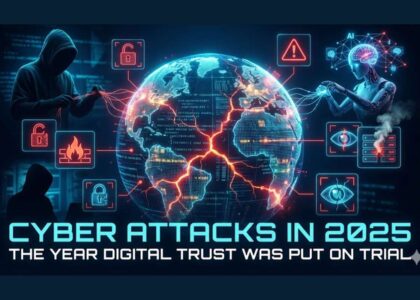Introduction: Welcome to the Underworld of the Internet
The internet is a double-edged sword.
On one side, it’s a gateway to knowledge, commerce, entertainment, and global connectivity. On the other side, it’s a dark alley full of cybercriminals waiting to exploit, scam, steal, or destroy.
Cybercrime isn’t just something you read about in headlines—it’s becoming a part of our everyday reality. Whether it’s a phishing email in your inbox or ransomware paralyzing hospitals, cybercrimes are evolving faster than most people realize.
But here’s the catch: cybercrime isn’t one single thing.
It comes in flavors—many, many flavors. Some are financial. Some are destructive. Some manipulate people. Some steal silently. Understanding cybercrime categories is the first step to defending yourself and your organization.
So, grab your coffee, and let’s unpack the major types of cybercrimes, from the obvious to the obscure.
1. Hacking (Unauthorized Access)
Let’s start with the classic.
Hacking is like breaking into someone’s house, except the house is a digital system, and the thief is using code instead of a crowbar.
What It Looks Like:
- A hacker gains unauthorized access to a company’s internal server.
- A teenager exploits a school website to change grades.
- Hackers steal login credentials using brute force attacks.
Intent:
- Steal data
- Spy on users
- Plant malware
- Disrupt services
Real-World Case:
The infamous 2017 Equifax data breach exposed the data of 147 million Americans because of a missed software patch. Yes, just one patch.
2. Phishing and Social Engineering
If hacking is technical, phishing is psychological.
Phishing tricks you into handing over sensitive data, usually by pretending to be someone trustworthy—like your bank, employer, or a government agency.
What It Looks Like:
- A fake email from “PayPal” asking you to verify your account.
- A WhatsApp message claiming you’ve won a lottery.
- A phone call posing as a tech support agent.
Variants:
- Spear Phishing: Highly targeted.
- Whaling: Aimed at C-level execs.
- Vishing: Voice phishing.
- Smishing: SMS phishing.
Why It Works:
Because humans are the weakest link. And attackers know exactly how to manipulate emotions like fear, urgency, or greed.
3. Ransomware Attacks
Imagine your files being locked, and the only way to get them back is to pay the attacker—usually in Bitcoin.
That’s ransomware.
What It Looks Like:
- An employee unknowingly opens a malicious email attachment.
- All systems are encrypted, demanding a ransom of $100,000 in crypto.
- Deadlines create urgency: “Pay within 72 hours, or lose your data forever.”
High-Profile Case:
In 2021, Colonial Pipeline was hit with ransomware, disrupting the fuel supply chain in the US. They paid nearly $4.4 million.
Ransomware is big business now. Some gangs even have customer support for victims!
4. Financial Fraud and Identity Theft
This category targets one thing: money.
How It Works:
- A criminal steals your card info and shops online.
- Your identity is used to open loans.
- You receive bills for accounts you never opened.
Common Tactics:
- Credit card skimming
- Business Email Compromise (BEC)
- Fake investment websites
- Loan scams
Why It’s Dangerous:
Because many people don’t realize they’ve been a victim until it’s too late. And cleaning up identity theft is a nightmare.
5. Cyberstalking and Online Harassment
The internet is not always a safe space—especially for women, minorities, and public figures.
Cyberstalking refers to the use of the internet or digital means to harass, intimidate, or threaten someone.
Examples:
- Constant unwanted emails or DMs
- Public doxxing (publishing private information)
- Threats via social media
- Deepfakes used for defamation
Real Victims:
Many women face targeted harassment campaigns online, often spilling into real life. Cyberstalking has serious mental health and legal consequences.
6. Child Exploitation and Abuse Material
One of the darkest corners of the internet.
Cybercriminals use hidden forums, dark web platforms, and even public social media to distribute, trade, or profit from child sexual abuse materials (CSAM).
Tactics Include:
- Grooming children via chat or gaming apps
- Sharing illegal content
- Sextortion: blackmailing minors for explicit content
Law Enforcement Angle:
Agencies like INTERPOL and FBI regularly crack down on such rings, but the battle is ongoing and horrifying.
7. Cyberterrorism
Yes, it’s real. And no, it’s not just something in spy movies.
Cyberterrorism refers to using digital means to disrupt, destabilize, or threaten nations and their critical infrastructure.
Examples:
- Shutting down power grids
- Disabling airport systems
- Attacks on water treatment plants
Why It Matters:
In today’s hyperconnected world, a cyberattack can have real-world consequences, including blackouts, economic damage, or even loss of life.
8. Intellectual Property Theft
Creatives, engineers, researchers—beware.
Cybercriminals target companies and individuals to steal:
- Trade secrets
- Patents
- Blueprints
- Source code
Common Victims:
- Tech startups
- Pharmaceutical companies
- Film production houses
- Game developers
Case Study:
In 2020, APT41, a Chinese hacking group, was accused of stealing source code from over 100 companies globally.
9. Denial of Service (DoS) and Distributed Denial of Service (DDoS) Attacks
Ever seen a website go down because of “high traffic”?
It could be a DDoS attack, where attackers flood a server with fake traffic to crash it.
Purpose:
- Sabotage business operations
- Extort ransom
- Distract from other attacks
Who Does This?
- Hacktivists
- Competitors
- State-sponsored actors
Fun fact: Even school kids have used DDoS tools to take down school servers to avoid online exams.
10. Insider Threats
Not all cybercriminals are outsiders.
Sometimes the threat comes from someone inside the organization:
- A disgruntled employee leaking sensitive data.
- A contractor who installs a backdoor.
- An intern who unknowingly introduces malware.
Types:
- Malicious: Intentional harm
- Negligent: Accidental mistakes
- Compromised: Their account was hacked
Companies often focus so much on external threats, they forget to monitor internal access.
11. Cyber Espionage
Governments spying on each other using digital means.
How?
- Planting malware in embassies
- Surveillance through spyware
- Intercepting diplomatic communications
Known Cases:
- Stuxnet, a U.S.-Israeli cyberweapon that sabotaged Iranian nuclear facilities.
- Pegasus Spyware, used to spy on journalists, activists, and political leaders.
This isn’t fiction—it’s happening right now.
12. Fake News and Information Warfare
This category is often overlooked, but it’s insanely powerful.
Manipulating online narratives can:
- Sway elections
- Spark riots
- Spread hate
- Tank stock prices
How It’s Done:
- Bot accounts on Twitter
- Fake videos and deepfakes
- Mass WhatsApp forwards
Remember the infamous Cambridge Analytica scandal? That’s information warfare using personal data.
13. Cryptojacking
Mining cryptocurrencies using someone else’s resources—without their permission.
What Happens:
- A malicious script is injected into a website.
- When you visit the site, your device starts mining crypto for the hacker.
- You won’t even notice, except maybe your laptop is suddenly slow and hot.
It’s a sneaky crime, but it costs individuals and companies millions in lost resources.
14. Online Drug and Weapon Trade
Dark web marketplaces like Silk Road were famous for illegal goods:
- Drugs
- Firearms
- Counterfeit currency
- Fake passports
Payment Mode?
Cryptocurrency, mostly Bitcoin and Monero.
Even after Silk Road was shut down, dozens of replacements popped up. The game continues.
15. Software Piracy and Illegal Distribution
Let’s be honest—many of us used pirated software at some point.
But distributing or profiting from pirated software is a serious cybercrime, often tied to:
- Malware spreading
- Data theft
- Backdoors in cracked software
If it’s free and too good to be true… it probably comes with a virus.
Conclusion: The Cyber Battlefield Is Bigger Than You Think
From the moment you connect a device to the internet, you’re in the battlefield.
Cybercrime isn’t just about stealing money. It’s about stealing trust. It disrupts economies, ruins lives, and even influences nations. And it’s evolving faster than our ability to stop it.
But knowledge is power.
By understanding the categories of cybercrime, you’ve already taken the first step toward awareness and protection. Whether you’re an individual, a startup, or a corporation, cybersecurity can no longer be an afterthought.
Keep your systems updated. Train your people. Use strong passwords. And most importantly, stay informed.
The internet is an incredible place—but only if we know how to navigate its darker corners.
Bonus: Quick Tips to Stay Safe Online
- Never click on suspicious links.
- Always use Two-Factor Authentication (2FA).
- Regularly update your software and OS.
- Backup your data securely and frequently.
- Use reputable antivirus and anti-malware software.
- Be skeptical—especially when things seem urgent or too good to be true.






